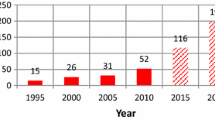Abstract
Performance-based regulatory Systems (PBRS) are being implemented in many countries, replacing the traditional prescriptive systems. These PBRS are especially attractive for addressing in a rational way the special needs of unique buildings, and there are no more unique buildings than those of historical or cultural significance. Thus, performance approaches are well suited to finding the balance between the need to protect often-irreplaceable buildings and their contents and the desire to preserve the significant historical or cultural aspects of the building. In this article the authors will discuss some important considerations in using performance approaches in the development of a fire protection strategy for historical structures and will cite examples of how this was done in a recent restoration design of a historic theater in Bari, Italy.












Similar content being viewed by others
References
International Building Code, IBC2000, International Code Council, Alexandria, VA, 2000
Guide to alternative approaches to life safety NFPA 101A. National Fire Protection Association, Quincy, MA 02269, 2001
SFPE engineering guide to performance-based fire protection analysis and design of buildings. Society of Fore Protection Engineers, Bethesda, MD, 2000
Code for fire protection of historical structures NFPA 914. National Fire Protection Association, Quincy, MA 02269, 2001
Life safety code NFPA 101. National Fire Protection Association, Quincy, MA 02269, 2000
Code for the protection of cultural resources NFPA 909. National Fire Protection Association, Quincy, MA 02269, 2001
Fire Prevention, Windsor Castle disaster: how a small fire developed into a disaster. Fire Prevention 256(7), January/February, 1993
Fiameni C, Gallina G, Mutani G (2000) Fire safety performance based approach applied to LaFenice Theatre in Venice (Italy). Fire Research Development and Application in the 21st Century. FORUM 2000 symposium. Organized by Architectural and Building Research Institute (ABRI), MOI, and FORUM for International Cooperation in Fire Research. Proceedings. Taipei, Taiwan, October 23–24, 2000, pp 1–19
It was set up a design team composed of numerous professionals covering all involved fields: historic issues, architecture, building restoration, structures, theater and stage techniques, fire prevention, technical plants, decorative elements restoration techniques, etc.
Petroni G (1854) Del gran teatro di Bari inaugurato il giorno 4 d’ottobre
Mancini F (1987) Il Teatro di S.Carlo – 1637–1987, Electa Napoli, Napoli
Zingarelli L, Melchiorre VA (1983) Il Teatro Piccinni di Bari, Edizioni dal Sud, Bari
The sensitivity of this kind of detection system is reported as very high in the technical information given by producers. The results of test developed to compare spot detector versus aspirated ones can be found in: Gottuk DT, McKenna LA Jr, Response Time Comparison of Spot and Aspirated Laser Smoke Detection Technologies in a Telecommunications Facility – Final Report, Hughes Associates, Inc., Baltimore, MD, November 1999. Further information can be found searching on the web for “aspirated smoke detection” or accessing web sites as: http://www.standards.com.au/Catalogue/script/Details.asp?DocN=stds000014568, http://www.wipo.int/cgi-pct/guest/getbykey5?KEY=01/59737.010816&ELEMENT_SET=DECL, http://www.coleindesign.com/products_article.html
Peacock RD, Forney GP, Reneke PA, Portier RM, Jones WW (1997) CFAST, the consolidated model of fire growth and smoke transport. National Institute of Standards and Technology-Building and Fire Research Laboratory, Gaithersburg, MD, USA, October 1997
Peacock RD, Reneke PA, Jones WW, Bukowski RW, Forney GP (1997) A user’s guide for FAST: engineering tools for estimating fire growth and smoke transport. NIST-Building and Fire Research Laboratory, Gaithersburg, MD, USA, October 1997
Nuzzolese V, Smoke control for fire control in buildings. Proceedings European Conference on Safety and Reliability “ESREL 2001” – Turin, Italy, September 2001. On the same subject and in a more complete version the papers: Nuzzolese V, Evaluating forced versus natural ventilation for smoke and fire control. Proc. FORUM Symposium, Milan, Italy, October 23, 2001 and Nuzzolese V, Restoration and fire protection of the Piccinni Theater in Bari: controlled ventilation to exhaust smoke and contain fire. Proceedings International Conference “Integrating Historic Preservation with Security, Fire Protection, Life Safety and Building Management Systems”, NFPA, Italian Ministry of the Interior, Rome, April 2003
Author information
Authors and Affiliations
Corresponding author
Rights and permissions
About this article
Cite this article
Bukowski, R.W., Nuzzolese, V. Performance-based Fire Protection of Historical Structures. Fire Technol 45, 23–42 (2009). https://doi.org/10.1007/s10694-008-0044-x
Received:
Accepted:
Published:
Issue Date:
DOI: https://doi.org/10.1007/s10694-008-0044-x




